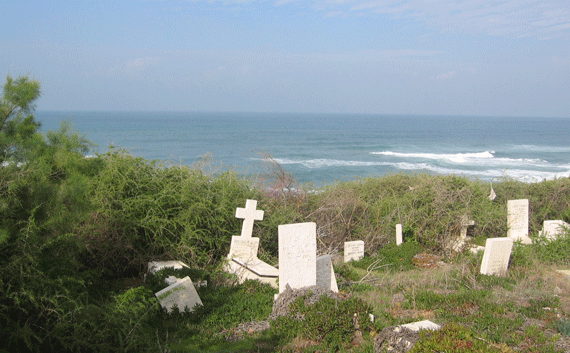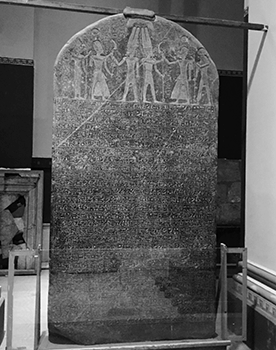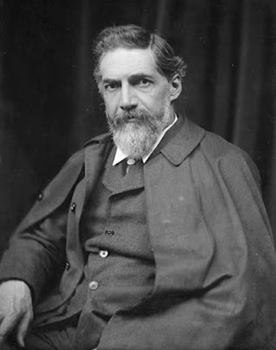|
|
|
 |
|
"AND JESUS WAS
LED BY THE SPIRIT OUT INTO THE
WILDERNESS TO BE TEMPTED BY THE DEVIL"
MATTHEW 4:1
|
|
|
 |
|
 |
| |
While heading
towards Masada from Jerusalem, a certain question
almost always comes up as American pilgrims are
taking in the rugged landscape of the Judean Mts.
framed against the Dead Sea. "Is this the area
where Bishop Pike died?"
The first time I was asked, I simply answered in the
affirmative. After the second time, I began to
ask my more veteran colleagues for details. Their
replies were vague and contradictory -- even as to
the year it happened. The range was from the
early sixties to the early seventies.
Curiosity led me to the library to check the
location of the wadi and to understand the
circumstances in which he died. Most
importantly, I wondered what was so special about
Bishop Pike that more than a decade after he died, a
wadi in the Judean Desert would evoke the
association of "bishop pike" for a Protestant
pilgrim.
In late August 1969 Bishop James Pike, aged 56, and
his third wife, Diane, 31, came to Israel for a
month to gather material about the origins of
Christianity for a book Bishop Pike was writing.
On September 2nd they set out from Bethlehem in a
rented car, intending to reach the wilderness where
Jesus was tempted by the devil.
After passing Herodion, they turned off on an
unpaved track which they thought led toward the
north, to Jericho. (They were, in fact, at the
beginning of Wadi Mashash, leading east, down
towards the Dead Sea.) However, soon the
unpaved road came to an abrupt end, as it had been
washed out by flash floods. The Pikes tried to
turn around to go back to Bethlehem, but the rear
wheels of the car dropped down into a deep rut.
They couldn’t free the car and didn’t know how to
use the jack. (The next day when Diane took
the search party out to the car, the men pushed it
free of the rut and the car ran perfectly.) |
| |
|
 |
|
Photo:
Gila Yudkin |
|
This photo looking south towards
the Judean wilderness was
taken from the Augusta Victoria Observatory on the
Mount
of Olives. The flat-topped hill along the
horizon is Herodion. |
| |
The Pikes abandoned
the car after trying unsuccessfully to get it out of
the rut. They then walked for two hours until
Bishop Pike was too exhausted to go on. They
found a relatively flat rock under a bit of an
overhang that gave them some shade. Mrs. Pike later
told the police, she thought they would die together
on that rock. But then she thought that if she
still had the strength, she should go get help.
Before she set out, Bishop Pike told her that if he
died there in the wilderness, he was at peace.
As the sun was setting, she left the map with her
husband and continued walking. First she climbed
down to the bottom of the wadi. Then when she
came to huge boulders and couldn’t go any further,
she climbed up on the walls of the wadi, continuing
to head towards the Dead Sea. Finally the
canyon wall got so steep, she knew she had to climb
out, even though that also seemed impossible.
At the top of the canyon, four hours after leaving
her husband, she eventually found a dirt track made
by the Jordanians (later the road to Mitzpe Shalem)
and followed it. The last kilometer had been
unfinished by the Jordanians and Diane Pike
descended with only the moon to light her way.
After some ten hours she stumbled the last few
meters onto the road being built between Ein Gedi
and Ein Fashha. A security guard found her
badly cut and bruised. Workmen brought her to
Nahal Kallia and she was taken to police authorities
in Bethlehem. |
| |
|
 |
|
Photo:
Gila Yudkin |
|
Judean cliffs which Diane Pike
descended by moonlight |
| |
In an interview at
the police station in Bethlehem, Mrs. Pike said, "We
tried to follow Jesus' footsteps. We wanted to
see the conditions Jesus knew. Jim had been
here six times before and I had been here once.
It was our first time in the desert. We didn't
take a guide. We were very stupid about that."
The story that Bishop Pike was reported missing in
the Judean Desert was immediately given front page
coverage in the New York Times. Bishop Pike
was a well-known, colorful figure in the Episcopal
Church and had been embroiled in a number of
controversies over the years.
Bishop Pike, raised as a Roman Catholic, became an
agnostic while in college. Educated as a lawyer, he
found himself drawn to the Episcopal church during
World War II. After the war he studied at the
Union Theological Seminary and began a clerical
career that saw him rise to become Episcopal Bishop
of the diocese of California with a national
reputation. He often used his prestigious
pulpit to attack organized religion for its racial
and political views.
He was branded as a dangerous radical by
conservative Episcopalians. They were further
incensed when he publicly began to criticize such
basic Christian doctrines as the concept of the
trinity and the Virgin birth. An example of
his unorthodox approach was that as Bishop of Grace
Cathedral in San Francisco, he ordered included
among the stain-glassed windows, panels honoring not
only traditional saints, but also John Glenn the
astronaut. In 1966 he resigned his see.
Because of a dispute with the bishop who succeeded
him, Dr. Pike was denied permission to marry Diane
who was the executive director of a foundation which
conducted research into life after death. They
had collaborated together on the book, "The Other
Side: An Account of My Experience with Psychic
Phenomena." The book recounted Bishop Pike's
successful efforts to establish contact with the
spirit of his son who had committed suicide in a New
York hotel in 1966.
Bishop Pike married Diane anyway without the
approval of the Episcopal diocesan and was
consequently barred from preaching in Episcopal
churches in California. Some months before he
died, he announced in a magazine article that he was
leaving the Episcopal church. He wrote, "The
poor may inherit the earth, but it would appear that
the rich -- or at least the rigid, respectable and
safe -- will inherit the church."
|
|
From
Bethlehem a search party was immediately
established to rescue Bishop Pike. Hundreds
of off-duty soldier volunteers, policemen
and border police were involved as well as
planes and helicopters. The abandoned
car was found -- but not Bishop Pike. The
only clue was the discovery of the map, but
there were no indications as to which
direction the missing bishop had set out.
After three days of temperatures rising
above 100 degrees, the official hunt was
called off and the search was continued by
36 former army scouts and local Beduin.
Chances for the survival of Bishop Pike were
considered to be slim. In the midst of
a news conference at her hotel, Mrs. Pike
was contacted by her family in the States
who said the same seer who had put her
husband in contact with the spirit of his
dead son had had a vision of him alive.
The seer who was recuperating from a heart
attack said Bishop Pike was alive in a cave,
not far from where she had left him, but he
was sick.
As a result of the publicity on Bishop
Pike's past involvement with a seer, Mrs.
Pike was contacted by many self-proclaimed
mediums. One medium from Tel Aviv did
a pendulum swing over two maps: one
large-scaled and the other small-scaled. The
pendulum landed on the same place both
times. Two men rushed from Tel Aviv
with the map to help the search party.
But there was no sign of Bishop Pike in the
marked area of the map or in its vicinity.
The same Tel Avivian medium then got another
message, this time through automatic
writing. That is, the medium held a
pen in her hand and a spirit (she claimed it
was the most noted American medium who had
ever lived, Edgar Cayce himself, dead since
1948) moved the pen. The message was
that Bishop Pike was in a cave, unconscious
and near death. The cave was said to
be on a narrow ridge with shrubs covering
the mouth of the cave. Volunteers and
police officials and members of the Society
for the Protection of Nature searched the
area again looking for a cave shielded by
shrubs in which Bishop Pike might have found
shelter against the blistering heat.
He was not to be found. |
|
|
 |
|
Photo:
Gila Yudkin |
|
This date orchard by the
Dead Sea was planted after 1969,
when Diane Pike came by, seeking help to rescue her husband |
|
| Mrs. Pike, visibly bruised after her own
10-hour hike through the same rocky terrain,
joined the search party for her husband
almost every day. She was admired by
all for her stamina and composure under the
most difficult of circumstances. The
police found themselves torn between their
skepticism of the new information being
produced by seers and mediums and their
desire to help Mrs. Pike. On September
7th, 5 days after the Pikes had left
Bethlehem to follow the footsteps of Jesus,
the body of Bishop Pike was found. He
had apparently continued in the footsteps of
his wife, believing that she was in trouble.
He had found a pool of water but went on,
probably looking for his wife. He had
left a series of clues -- a map, undershorts,
glasses, and a contact lens case -- to
indicate the path he had taken.
Bishop Pike was climbing a steep ascent in
Wadi Mashash (the upper Daraje) either to
extricate himself from a box canyon or to
get a better view, when he fatally slipped
and fell. The following day he was
buried in St. Peter's cemetery in
Jaffa under a large tamarisk tree by the sea.
The tombstone notes his birth in Oklahoma
City in 1913 and his death in the Judean
Wilderness in 1969.
|
|

|
 |
|
Photo:
Barbara Kreiger |
Photo:
Gila Yudkin |
|
Bishop Pike's grave with
the Mediterranean
|
JAMES A. PIKE |
|
Sea in the background |
BISHOP |
|
|
When the body was found, Mrs. Pike eulogized
her husband, "There could have been no more
appropriate place for Jim to die, if he had
to die. He died in the country he
loved as though it were his own, in the
wilderness where Jesus, according to the
Gospels went to pray and meditate."
|
|
Copyright 1983, 2005
Gila Yudkin. Permission needed for any reuse. |
|
|
|
 |
|
Photo:
Gila Yudkin |
|
View from Bishop Pike's
grave in Jaffa |
|
|
Postscript
In 1999 a colleague of mine met the brother
of Bishop Pike’s widow, Diane, and told him
about the “Whatever Happened to Bishop Pike”
article I had published in 1983 in the
Israeli magazine, “Moreshet Derech.”
After he expressed interest, I emailed the
article to him to forward to his sister.
Diane Pike wrote me, “I have read your
article with great interest and with
admiration for you for doing so much
research and piecing together the story so
well and so thoroughly. You have done
a fine job and you present a sympathetic
understanding of my husband and of his
death.” She included some minor
corrections which I incorporated in the
text. She added, “All the soldiers who
helped in the search did so when they were
off-duty, as volunteers. That touched
me very much.”
Diane’s brother, Scott Kennedy, wrote me,
that he had visited Wadi Mashash with his
daughter and a friend during a visit to
Israel and added, “We spent several hours
there, hiking into the wadi to the spot
where Jim Pike died. It has changed
some since that time, though I hadn’t been
into the wadi for more than 20 years!
I find it strangely beautiful despite the
association with Jim’s death 30 years ago.” |
|
|
More about the Judean wilderness |
|
|
| Read
about the
Witch of En Dor
who stars in the only scene in the
Hebrew Bible where a character is
actually summoned up from the
netherworld. |
| |
|
 |
|
William
Blake around 1800 | Courtesy of Wikipedia
Commons |
|
The Witch of En Dor
raising the spirit of Samuel |
| |
|
The nineteenth and twentieth century
Holy Land explorer and preeminent
archeologist
Sir Flinders Petrie
was buried headless in the Protestant
Cemetery on Mount Zion in Jerusalem.
Read about why he is important and why
he is headless! |
| |
 |
 |
|
Photo: Gila
Yudkin |
Courtesy of Wikipedia
Commons |
|
Merneptah or Israel
Stele |
Archeologist Sir
Flinders Petrie |
| |
|
David practiced his prowess with a
sling, as he protected his sheep and
goats, not too far from where the Pikes
started that fatal journey through the
wilderness of Judea. The "traditional
sling that killed Goliath"
(see below) is an unusual gift for
someone fighting giants -- or a creative
Sunday School teacher! |
|
|
|
|
|
|
GILA
YUDKIN
•
TCHERNIKOVSKI
64A
•
JERUSALEM
•
ISRAEL
gila@itsgila.com
HOME
•
BOOK
GILA
•
TIPS
FOR TOURS •
ABOUT GILA
|
|